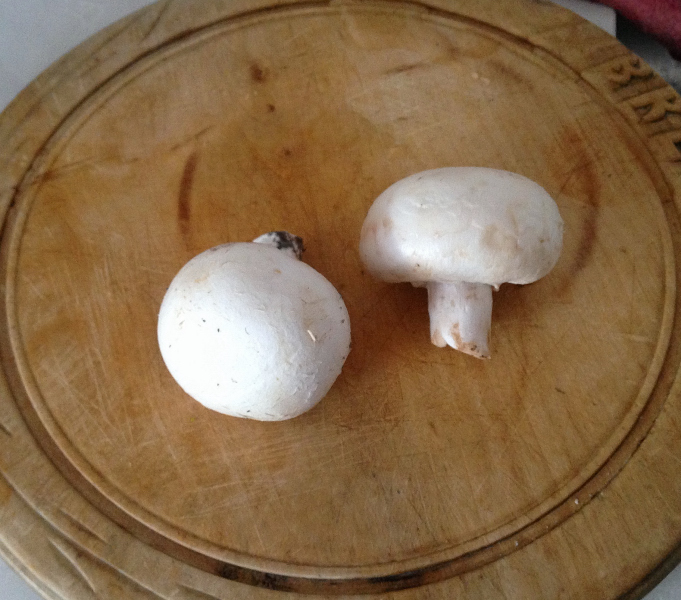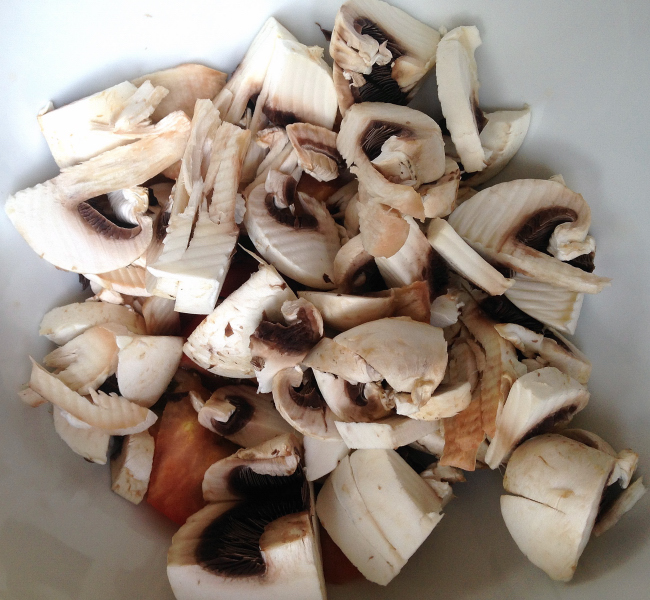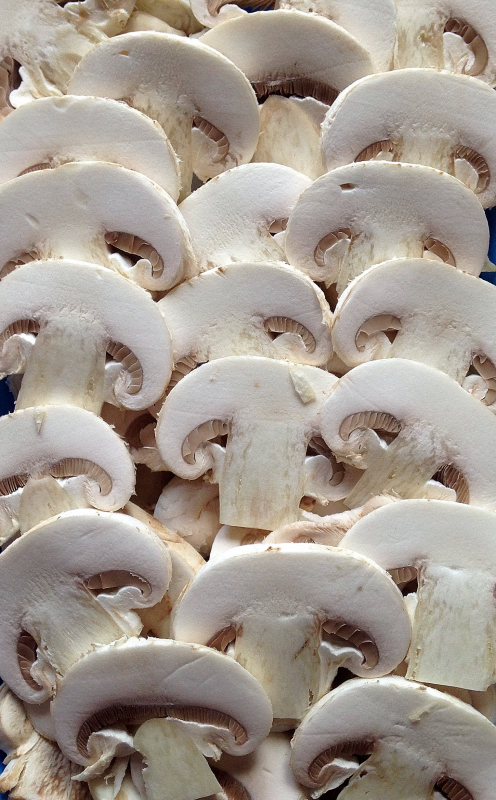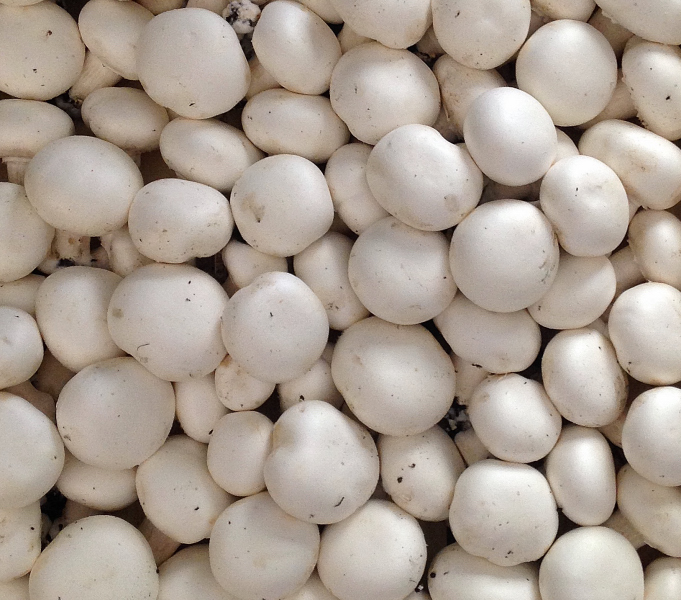Button mushroom (Agaricus bisporus) , edible, has a long history of cultivation that dates 300 years and the first commercial cultivation was born in France in 1700 (Pardo and C 2010 - Tournefort 1707).
World production exceeds 4 million tonnes. In the U.S., these mushrooms are a crop of about 400,000 tons in 2014 with a turnover of 1.4 billion dollars (1).
In Europe it is mainly grown in the Netherlands, France and Poland.
In Asia it is mainly grown in China (2,500 tons), South Korea and India.
In the kitchen, the infusion of culinary treatments (boiling, microwaving, grilling, and frying) affects the overall composition and antioxidant capacity of cultivated mushrooms. Frying induces the most serious losses of proteins and carbohydrates, increases the content of fat and energy and reduces antioxidant activity. Boiling improves the total content of glucans, improving beta-glucan fraction, but reduces antioxidant activity. The best treatment is microwaving because it maintains the nutritional profile of mushroom (2).
The greatest danger for this mushroom is the Lycoriella ingenua fly (Dufour 1839), a ditto belonging to the Sciaridae family. This article describes the techniques of contrasting this fly (3).
Another danger is the fungal infection caused by the pernicious Mycogone that mows 15-30% of the crop (4).
From a healthy point of view it is an interesting food, like most edible forest mushrooms and contains a good amount of beta-glucans (5), vitamin D2 or ergosterol and Agaritine (6) and a new protein called LSMT with promising properties pharmaceuticals (7).
Agaricus bisporus studies
References__________________________________________
(1) USDA. Specialty Crops: Mushroom Production. Agricultural Marketing Resource Center. 2014.
(2) Effect of different cooking methods on nutritional value and antioxidant activity of cultivated mushrooms.
Roncero-Ramos I, Mendiola-Lanao M, Pérez-Clavijo M, Delgado-Andrade C. - Int J Food Sci Nutr. 2016 Oct
(3) Attraction, Oviposition and Larval Survival of the Fungus Gnat, Lycoriella ingenua, on Fungal Species Isolated from Adults, Larvae, and Mushroom Compost.
Cloonan KR, Andreadis SS, Chen H, Jenkins NE, Baker TC. - PLoS One. 2016 Dec
(4) Identification of Resistance to Wet Bubble Disease and Genetic Diversity in Wild and Cultivated Strains of Agaricus bisporus.
Fu Y, Wang X, Li D, Liu Y, Song B, Zhang C, Wang Q, Chen M, Zhang Z, Li Y. - Int J Mol Sci. 2016 Sep
(5) Screening of beta-glucan contents in commercially cultivated and wild growing mushrooms.
Sari M, Prange A, Lelley JI, Hambitzer R. - Food Chem. 2017 Feb
(6) Impact on Vitamin D2, Vitamin D4 and Agaritine in Agaricus bisporus Mushrooms after Artificial and Natural Solar UV Light Exposure.
Urbain P, Valverde J, Jakobsen J. - Plant Foods Hum Nutr. 2016 Sep
(7) In Silico Study to Develop a Lectin-Like Protein from Mushroom Agaricus bisporus for Pharmaceutical Application.
Ismaya WT, Yunita, Damayanti S, Wijaya C, Tjandrawinata RR, Retnoningrum DS, Rachmawati H. - Sci Pharm. 2016 Feb
![]() Button mushroom Agaricus bisporus
Button mushroom Agaricus bisporus 




